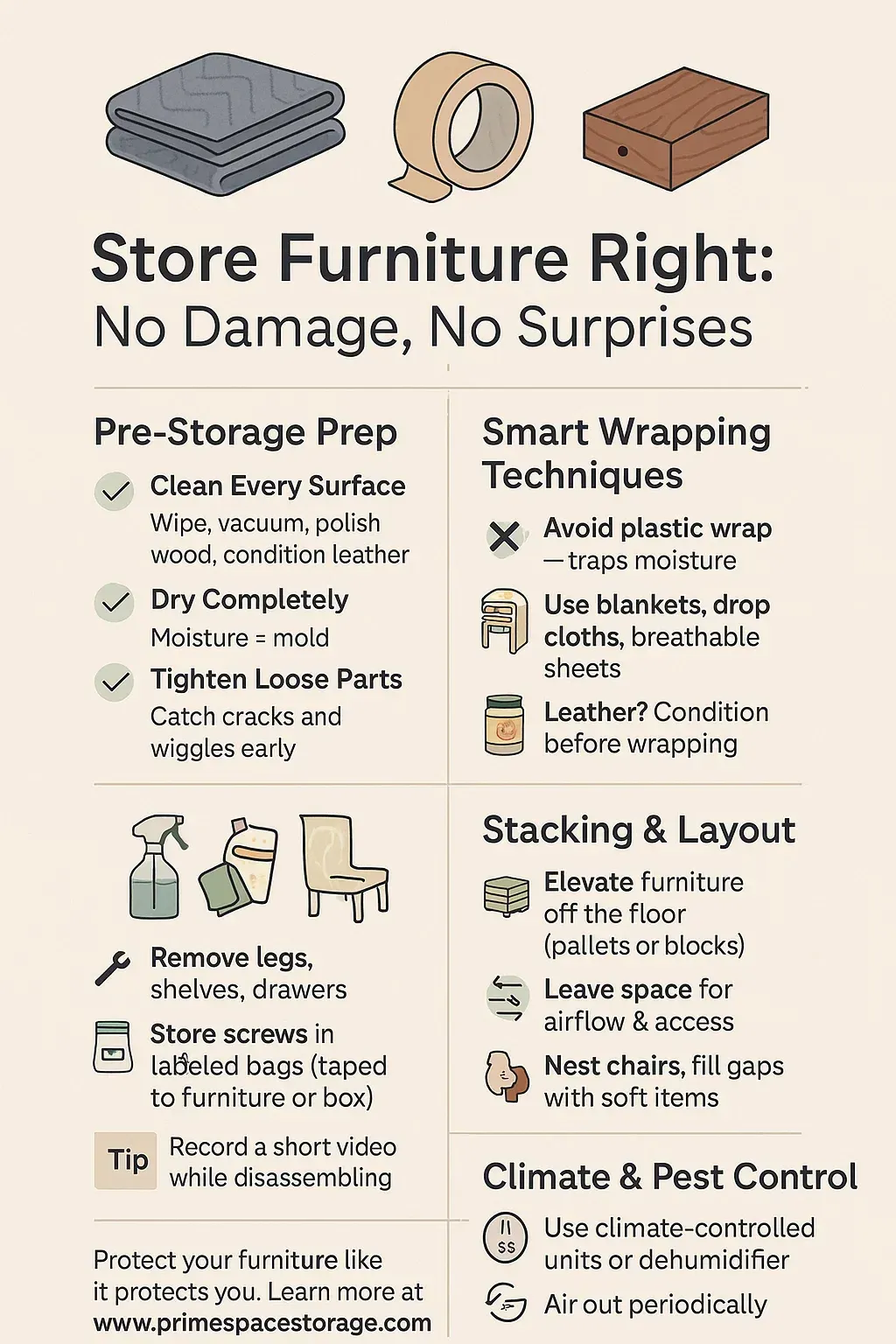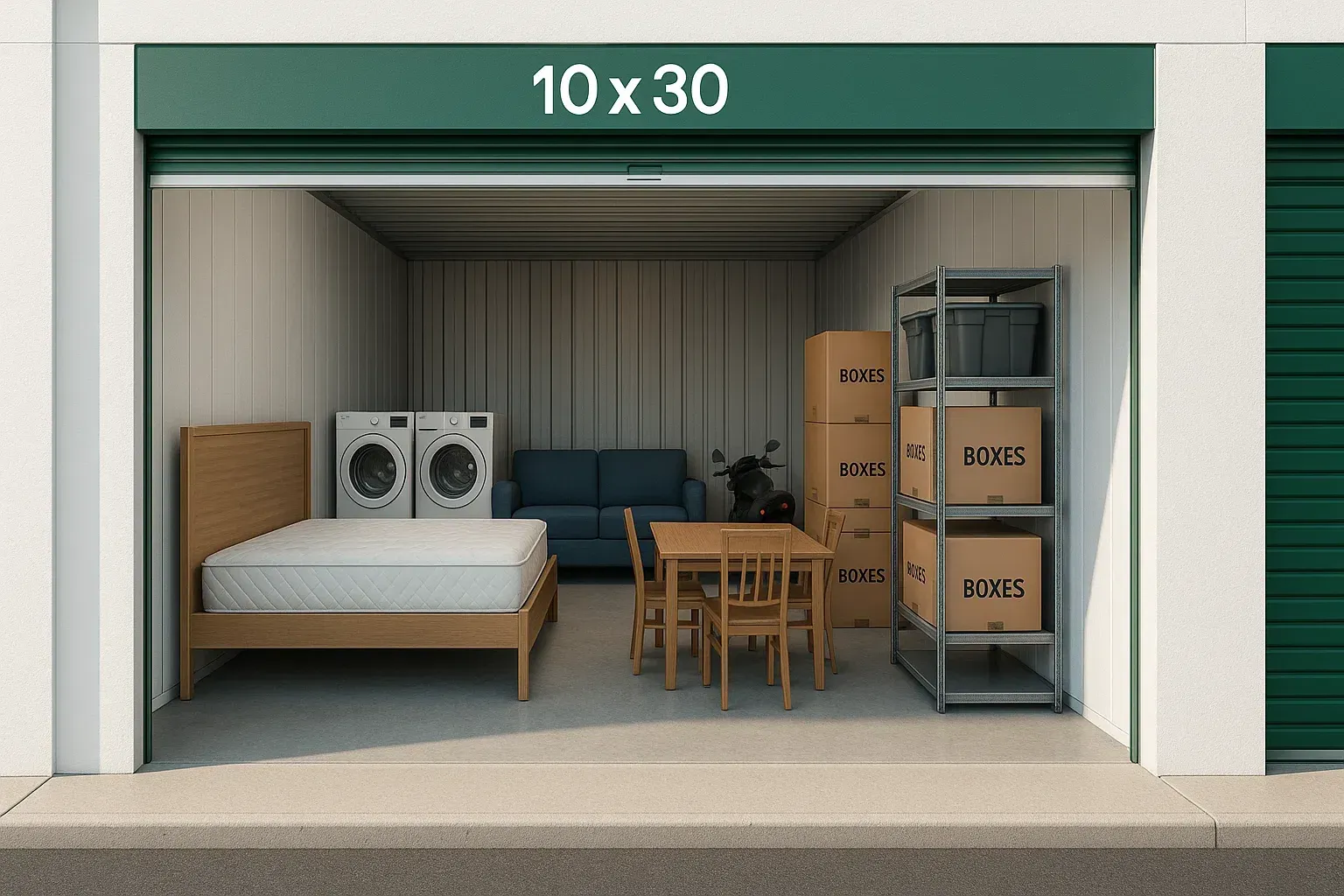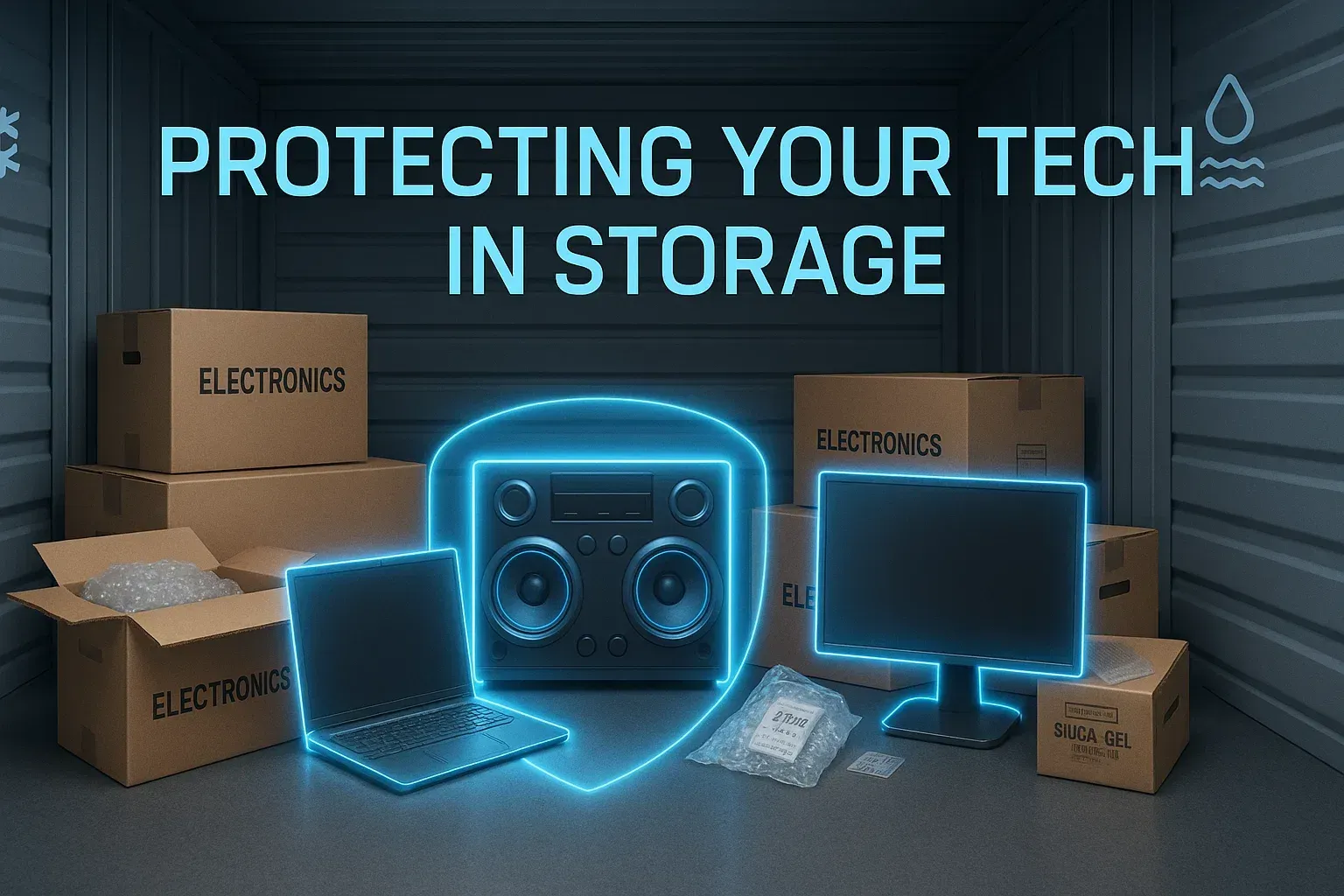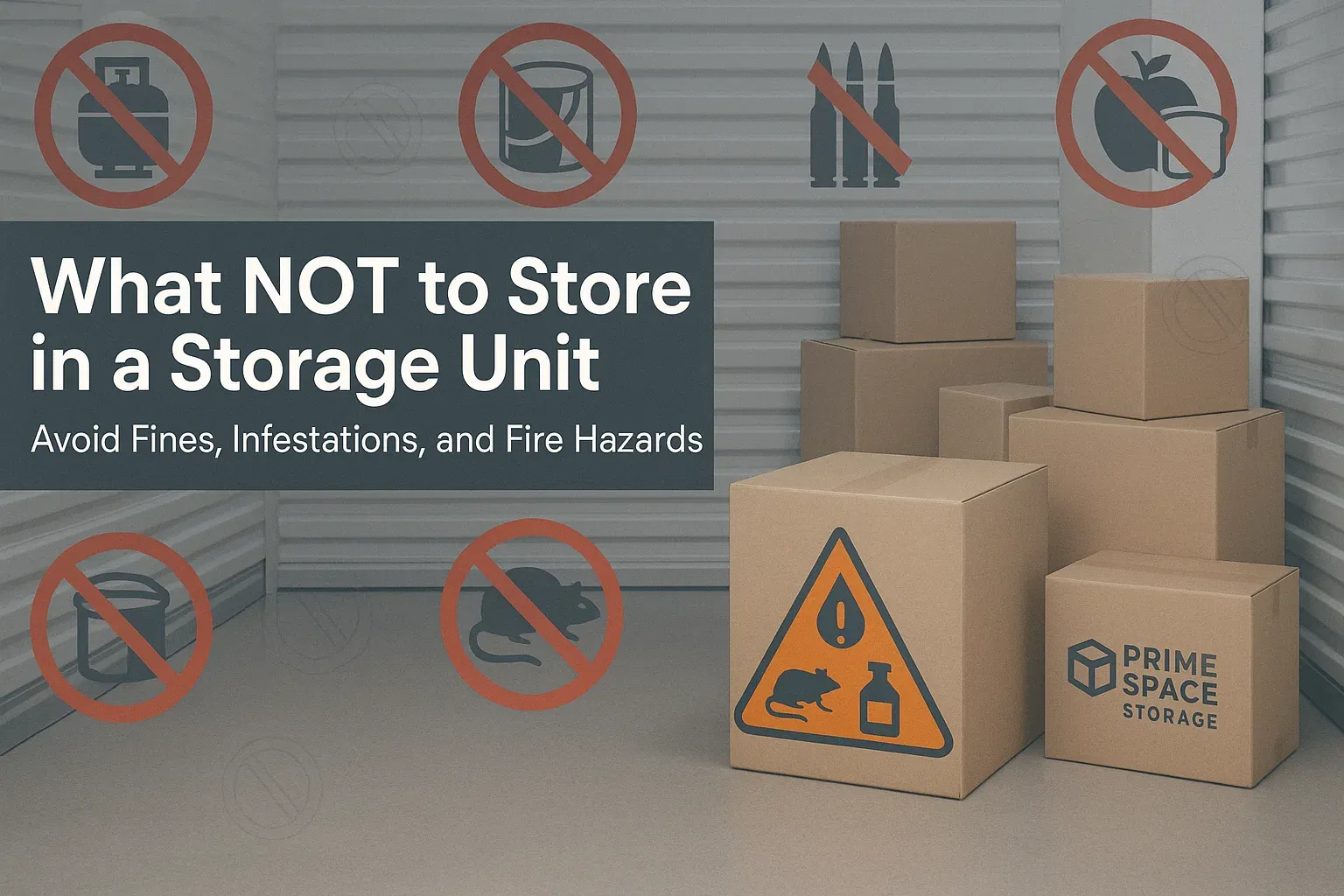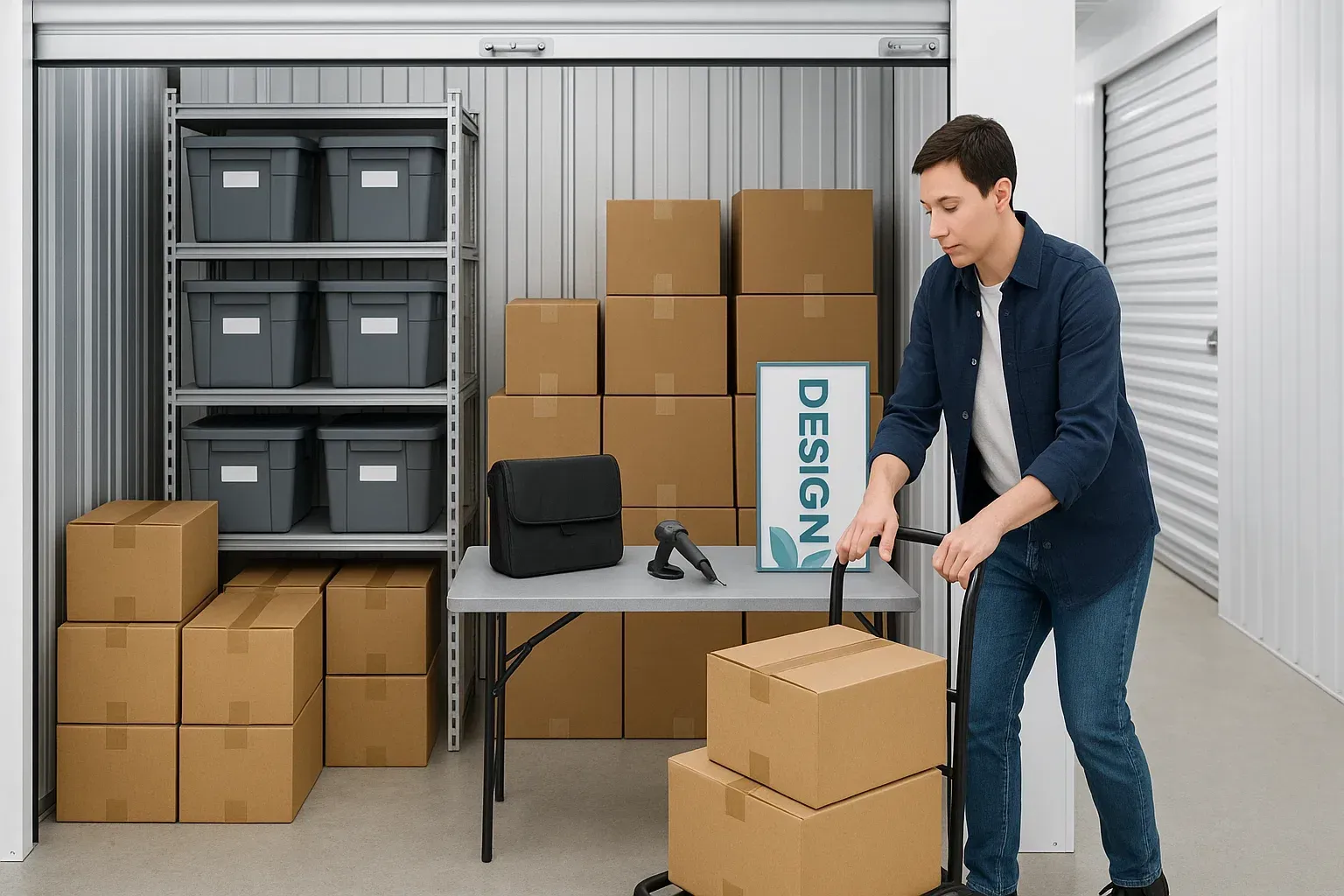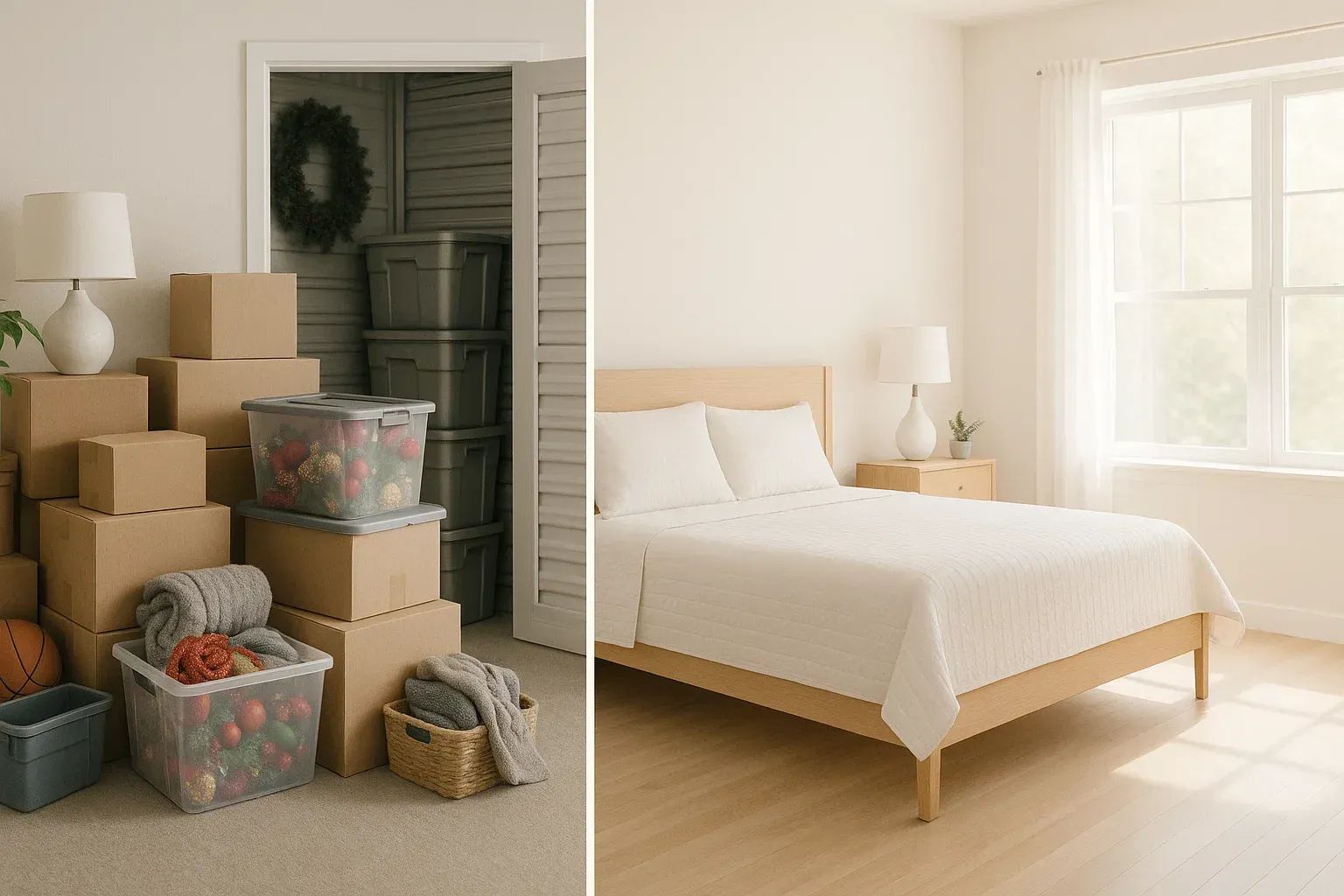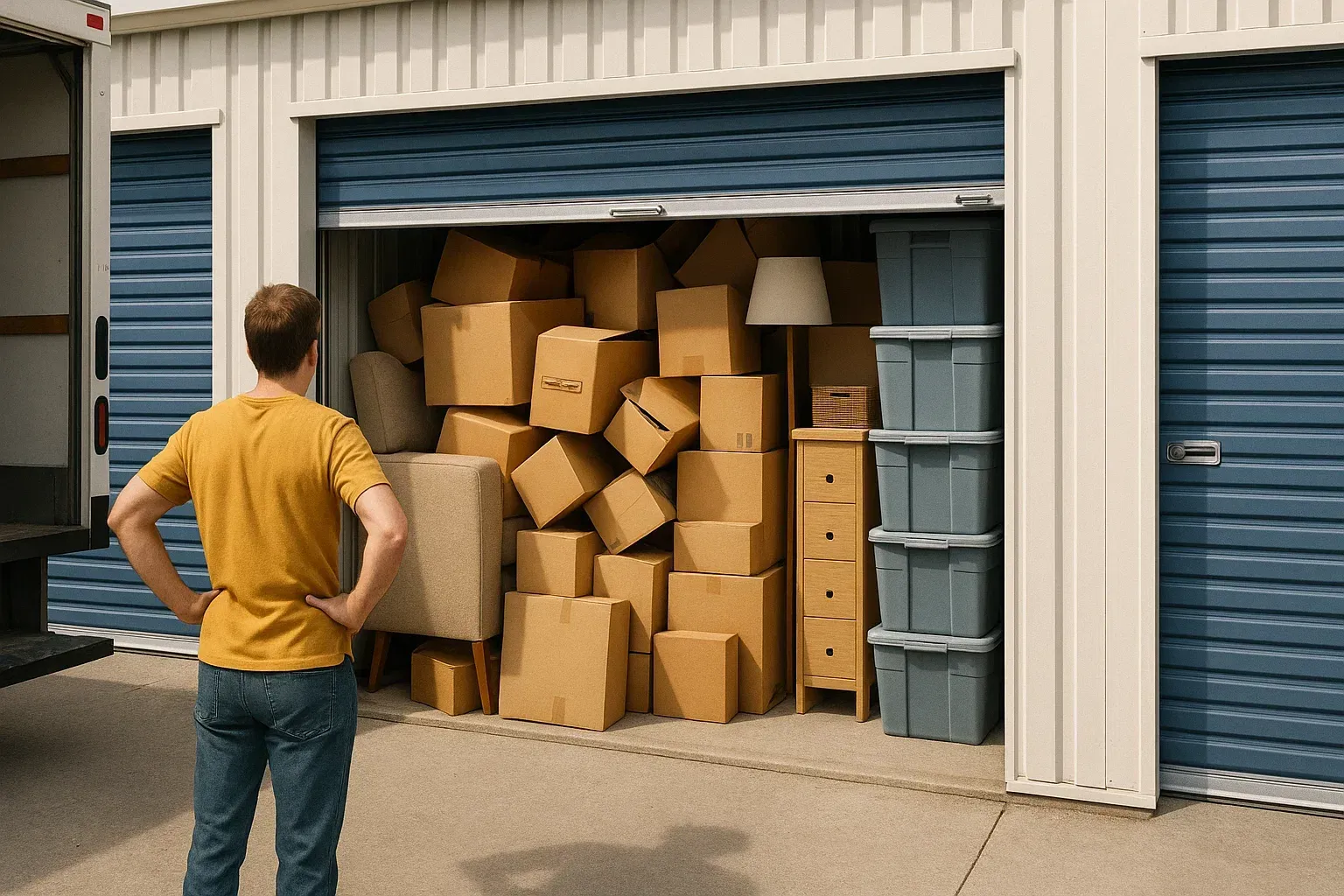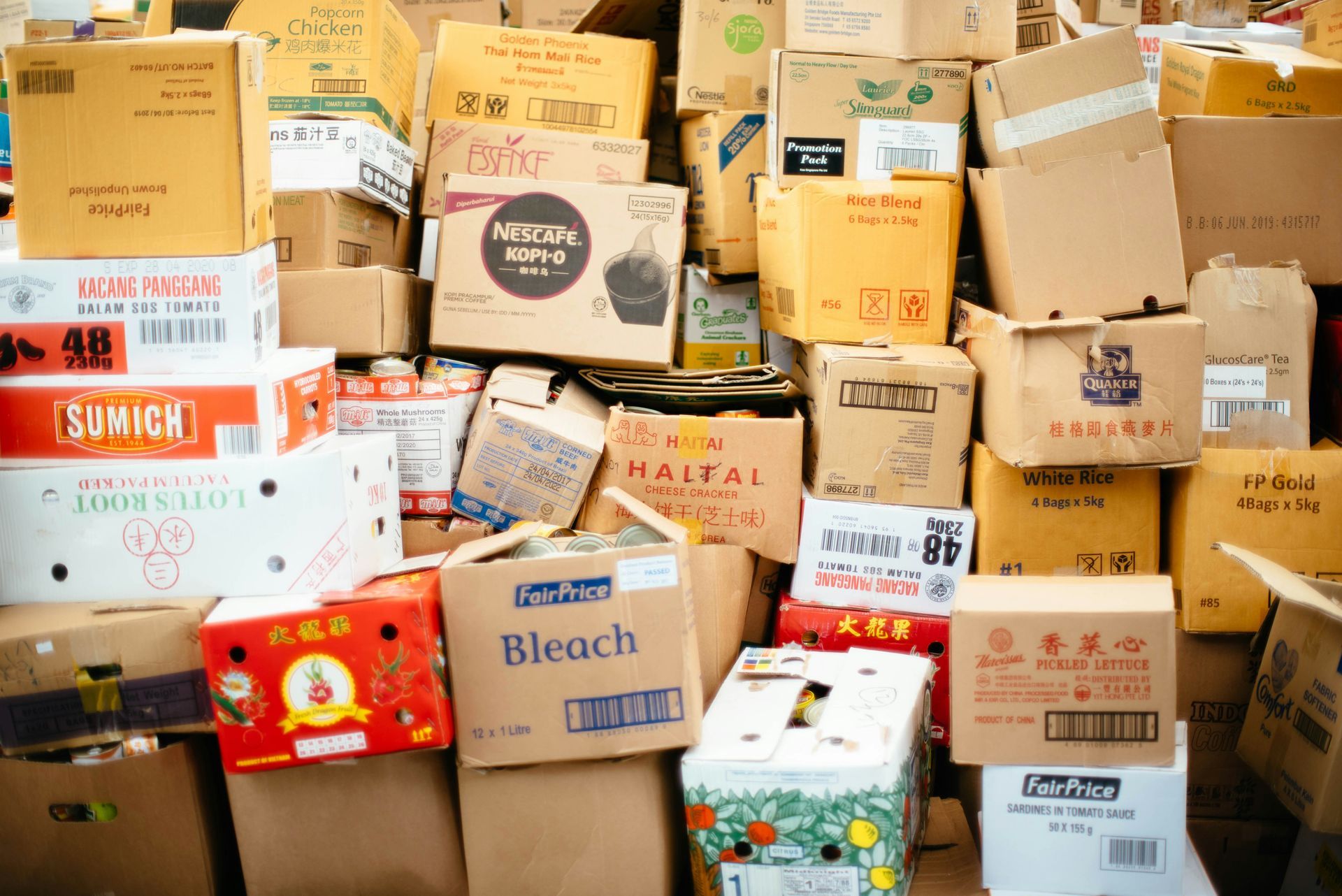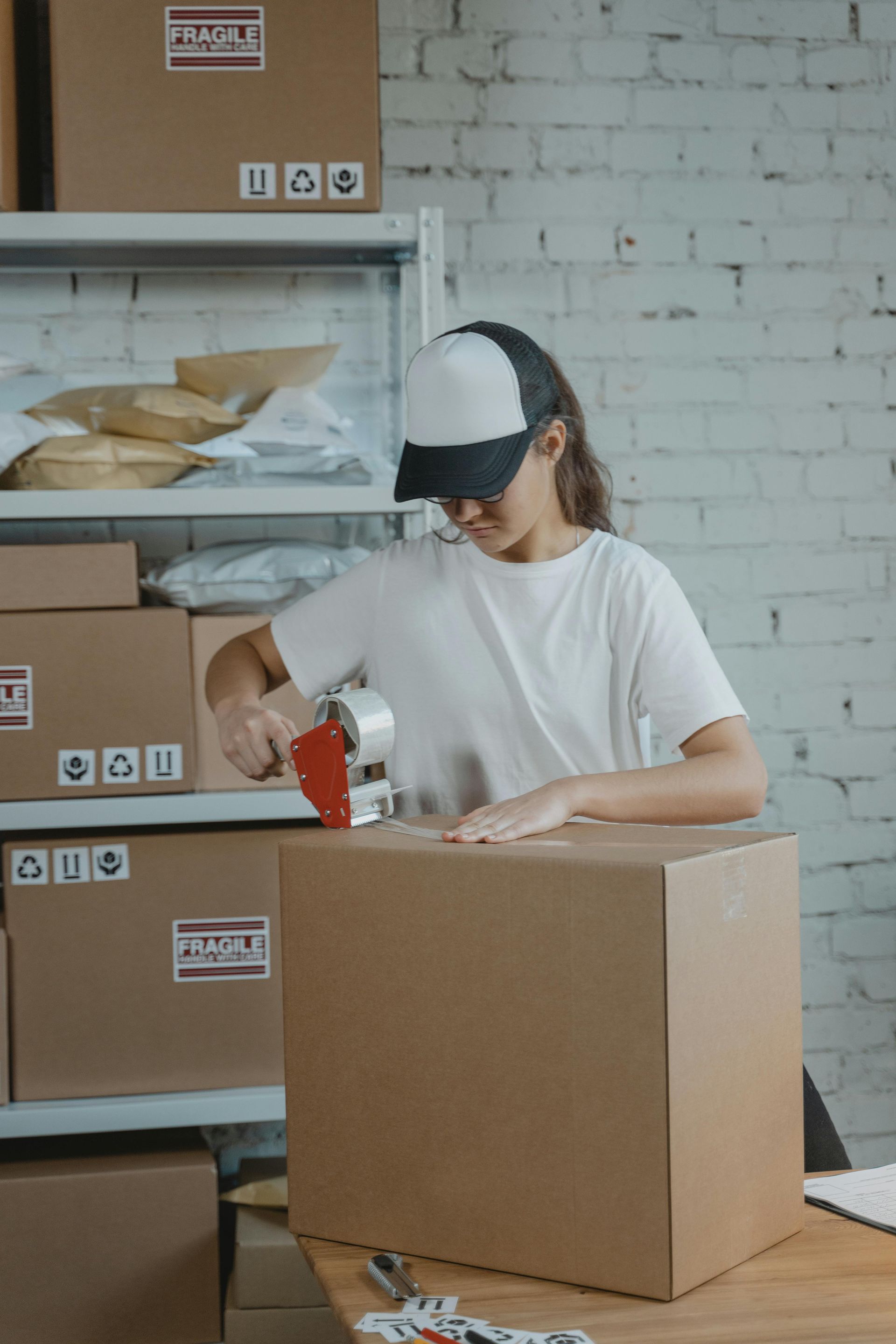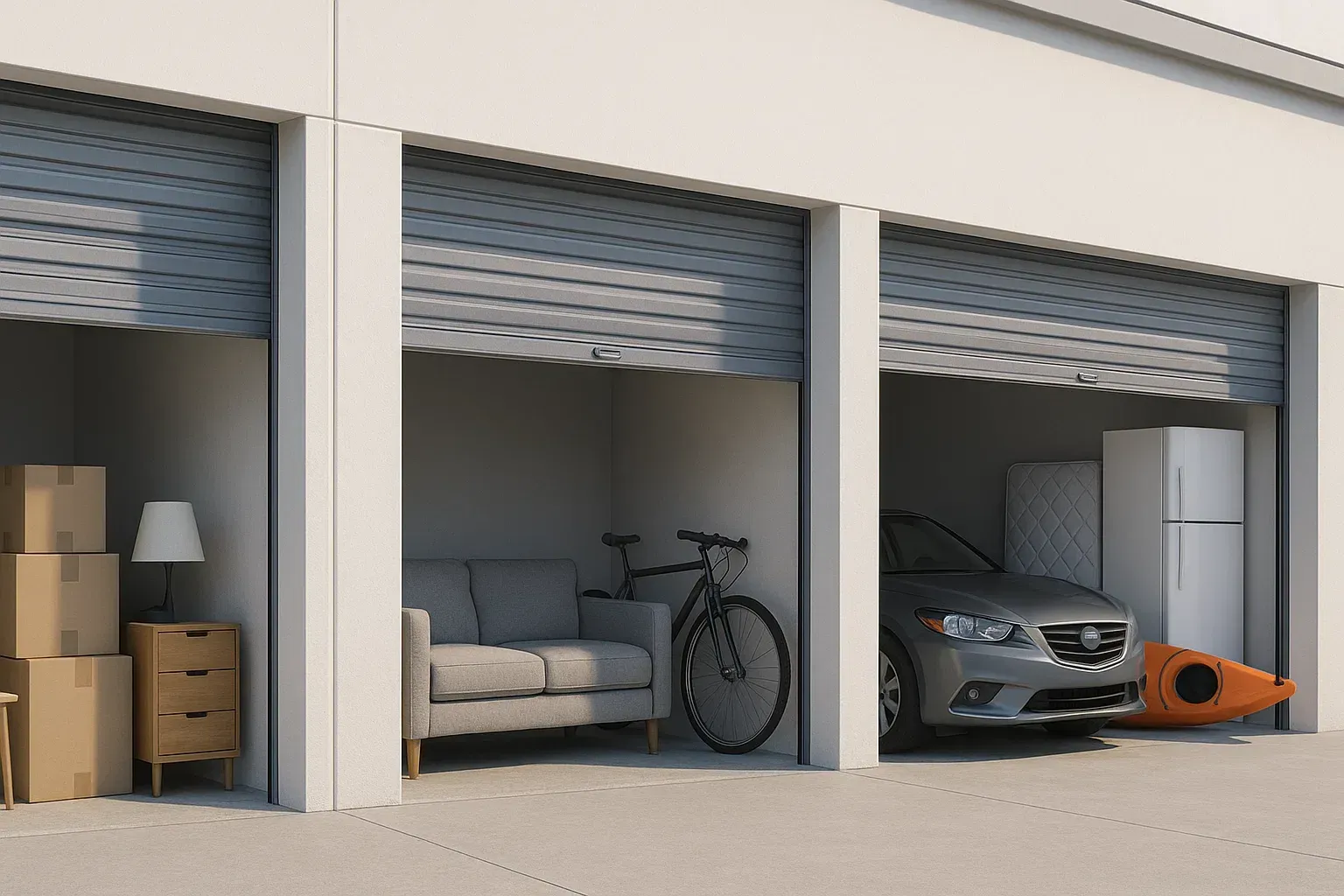October 9, 2025
What Fits in a 10x30 Storage Unit: A Helpful Guide When life transitions demand extra space, whether you're downsizing, relocating, running a growing business, or simply need to declutter, finding the right storage solution becomes crucial. A 10x30 storage unit represents one of the most versatile and spacious options available, offering a perfect balance of capacity for South Carolina residents and businesses. At PrimeSpace Storage, we understand that choosing the right storage unit size can make all the difference in organizing your life efficiently. Introduction to Storage Units A 10x30 storage unit provides an impressive 300 square feet of storage space, making it an ideal solution for storing household items, business inventory, and more. This substantial storage capacity equals roughly the size of a large garage, offering both horizontal and vertical space that can accommodate a wide variety of belongings. Storage unit sizes come in many variations, and selecting the right one is crucial for maximizing your investment. The 10x30 storage unit sits at the larger end of the spectrum, making it perfect for customers who need substantial space. PrimeSpace Storage offers this popular size along with a comprehensive range of unit sizes to meet diverse storage needs. When selecting a storage facility, it's essential to consider factors beyond just size. Security features, climate-controlled options, accessibility, and facility maintenance all play crucial roles in ensuring the safe and convenient storage of your belongings. PrimeSpace Storage's commitment to providing secure, clean, and climate-controlled units means your stored items receive the protection they deserve, whether you're storing for a few months or need long-term storage. Benefits of a 10x30 Storage Unit The 10x30 storage unit offers exceptional versatility, providing enough space for various needs, from residential moves and downsizing to inventory storage for businesses and seasonal requirements. The generous available space allows for organized storage that keeps your personal belongings easily accessible while maintaining proper protection. This size is ideal for storing bulky items such as large bedroom furniture, major appliances, and business equipment. The combination of ample space and high ceilings means you can utilize vertical storage techniques to maximize capacity. Whether you're storing dining room sets, wooden furniture, or office equipment, this unit provides enough room without cramping your belongings. With a 10x30 storage unit at PrimeSpace Storage, you can comfortably store business inventory or household collections such as holiday decorations and patio furniture. Unlike smaller unit sizes, this option gives you ample room, reducing the need to constantly rearrange. This is particularly valuable for businesses with seasonal items or families managing estate belongings. The stable climate-controlled environment protects against South Carolina’s extreme temperatures and humidity swings, maintaining a stable temperature that helps preserve wood furniture, electronics, and important documents. For those who need long-term storage, this protection ensures you can safely store sensitive items without concern for environmental damage. Security Features and Peace of Mind Security measures represent a top priority when using any storage facility. PrimeSpace Storage addresses this with advanced security features, including gated access, secure keycode entry, and 24/7 surveillance cameras. These layers of protection ensure your stored items and personal belongings remain safe at all times. Continuous video monitoring not only deters theft but also provides accountability. This reassurance is especially valuable for customers keeping promotional materials, family heirlooms, or costly business equipment inside their 10x30 storage unit. A well-maintained facility with bright lighting and professional management further ensures both safety and convenience. Unlike many storage facilities that may overlook upkeep, PrimeSpace Storage ensures systems remain operational, giving customers complete peace of mind. Climate Controlled Options for Optimal Protection For South Carolina’s fluctuating climate, climate-controlled units are an essential feature. These units maintain stable conditions between 55–80°F, preventing warping, mold, and rust. This is particularly important for wood furniture, electronics, household items, and business inventory. PrimeSpace Storage’s climate-controlled units ensure that stored items remain safe from environmental factors like humidity and heat. Businesses that need to store sensitive items such as records or electronics benefit greatly from this protective environment. Compared to multiple facilities offering varying services, PrimeSpace Storage delivers consistent, reliable protection across its unit availability options. Maximizing Storage Unit Size and Space The 10x30 storage unit provides enough space for smart organization when paired with efficient storage strategies. Adding shelving units, stacking boxes, and creating clear pathways allows you to maximize vertical space while keeping items accessible. To stay organized, it’s best to label boxes, group items by category, and maintain a quick reference inventory. Families storing belongings or businesses using the unit for inventory will find this system especially effective. Over time, storage needs may shift. PrimeSpace Storage offers flexible rental agreements, allowing you to adjust your plan based on evolving requirements without long-term strain. Easy Access and Convenience Features Convenience can make a huge difference in whether storage feels like an asset or a burden. Customers benefit from regular business hours, clean pathways, and professional staff who maintain a well-kept facility. This ensures both safety and efficiency during every visit. For customers who require frequent access—such as businesses rotating seasonal items or families cycling through holiday decorations—PrimeSpace Storage provides flexible access schedules that balance security with convenience. Household Items Storage Solutions A 10x30 storage unit can typically hold the contents of a multi-room home, making it perfect for families downsizing or temporarily relocating. This includes bedroom furniture, large appliances such as washing machines, and household items like seasonal décor. Protective steps such as using furniture covers ensure delicate items remain intact during long-term storage. Organizing seasonal items and patio furniture by section further helps maximize the ample room provided by a 10x30 storage unit. For families with multiple rooms of belongings, the secure space at PrimeSpace Storage allows you to comfortably store everything without compromise. Business Inventory Storage Applications For businesses, a 10x30 storage unit offers a practical alternative to commercial warehouses. Companies can store business inventory, equipment, or promotional materials in a climate-controlled unit without worrying about deterioration. The unit provides enough space for inventory that includes both small boxes and bulky items. Retailers, contractors, and seasonal vendors benefit from the ability to keep large quantities of supplies secure in one location. With systematic organization using shelving units, labeling, and inventory logs, businesses gain quick retrieval access, even during frequent visits. Making the Most of Your Storage Investment A 10x30 storage unit at PrimeSpace Storage provides not only ample space but also unmatched benefits when combined with security measures, climate-controlled options, and professional support. Whether you need temporary storage during a move, long-term protection for personal belongings, or a way to manage business inventory, this storage solution adapts to your lifestyle. Ready to see what fits in a 10x30 storage unit? Visit PrimeSpace Storage today to explore their conveniently located facilities and discover how their professional services and essential features can support your storage requirements with the secure space, convenience, and peace of mind you deserve. Frequently Asked Questions About 10x30 Storage Units What fits in a 10x30 storage unit? A 10x30 storage unit can hold the contents of an entire household, typically including multiple rooms of bedroom furniture, appliances like washing machines, dozens of labeled boxes, and bulky business equipment. How big is a 10x30 storage unit compared to other unit sizes? With 300 square feet of storage space, a 10x30 storage unit is roughly the size of a large garage. It offers significantly more capacity than mid-range unit sizes like 10x10 or 10x20, making it one of the largest standard storage unit sizes available. Is climate control important for a 10x30 storage unit? Yes. Many storage facilities offer climate-controlled options, which maintain stable conditions that protect items from extreme temperatures and humidity. This is especially important for wood furniture, electronics, documents, and business inventory that could otherwise be damaged. What are the best uses for a 10x30 storage unit? A 10x30 storage unit is ideal for families moving or downsizing, needing temporary storage for an entire household; businesses that need to store inventory, equipment, or promotional materials; students who require long-term storage for belongings; and event companies storing tents, gear, and seasonal items. How can I maximize space in my 10x30 storage unit? Using shelving units, stacking boxes, and creating clear pathways will maximize both floor and vertical space. Be sure to label boxes clearly, use furniture covers for protection, and group similar household items or business inventory together for easy retrieval. Do I get easy access to my 10x30 storage unit? At PrimeSpace Storage, customers benefit from gated access and regular business hours that allow for frequent access when needed. This makes it easy to rotate seasonal storage, pick up holiday decorations, or restock business inventory without hassle.
